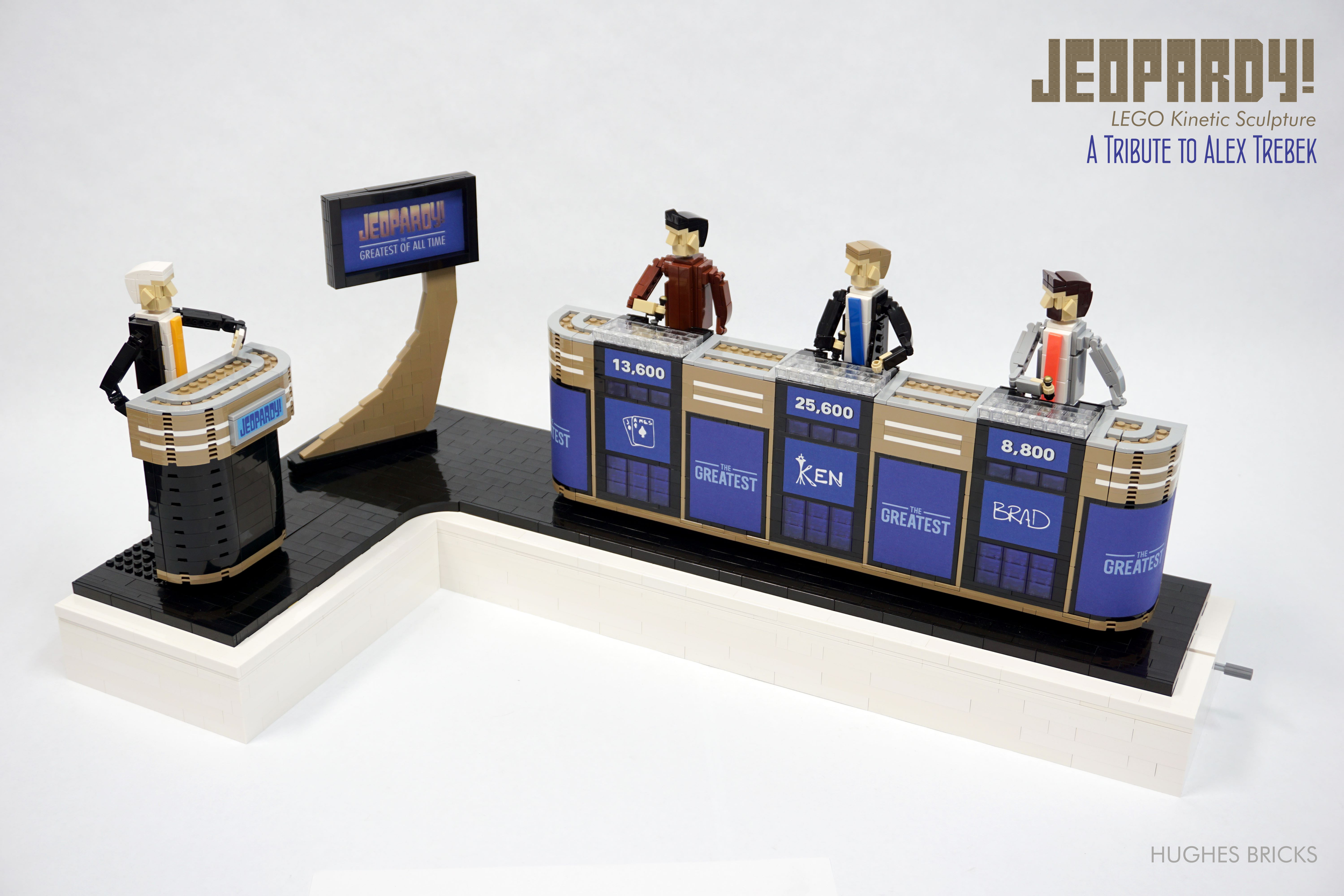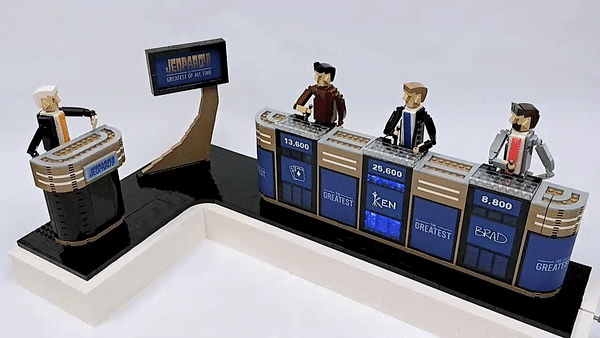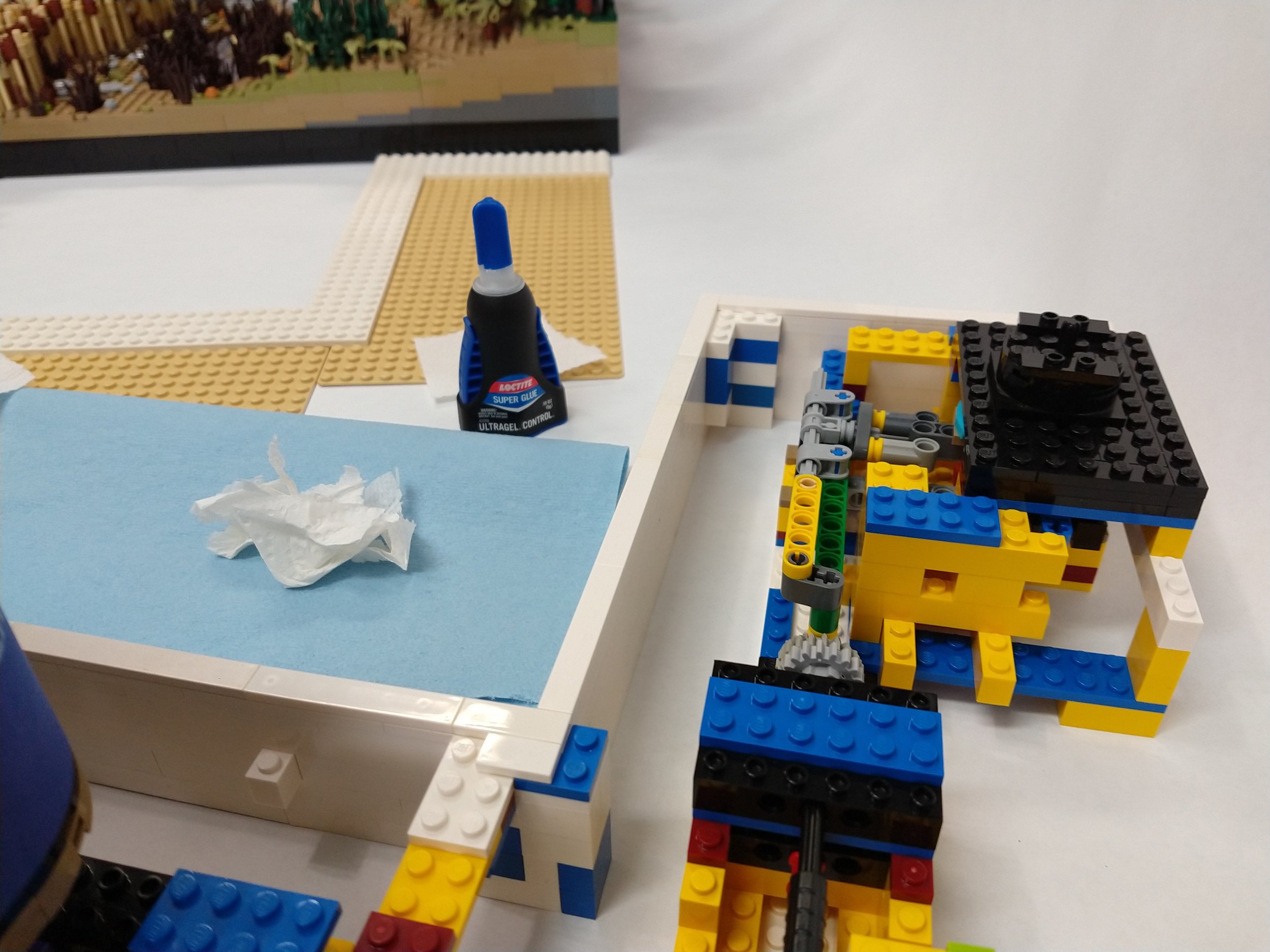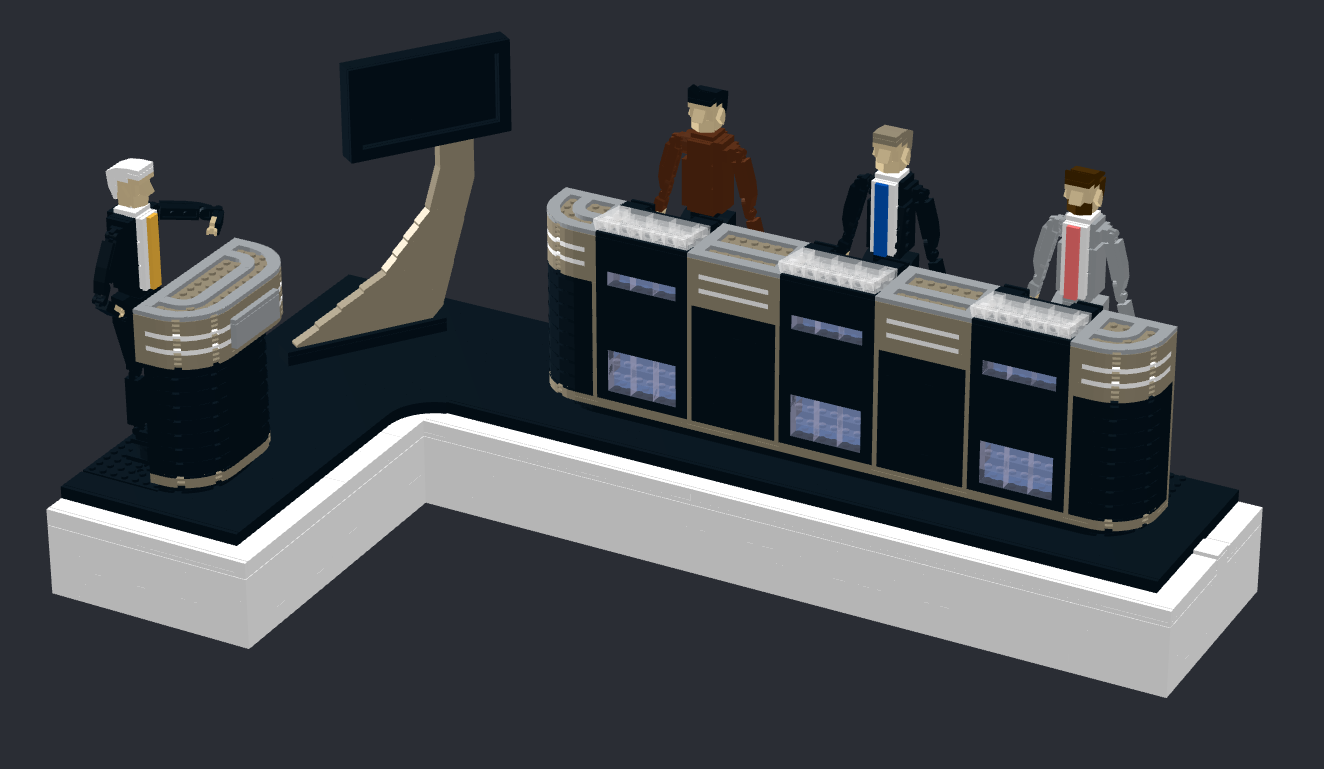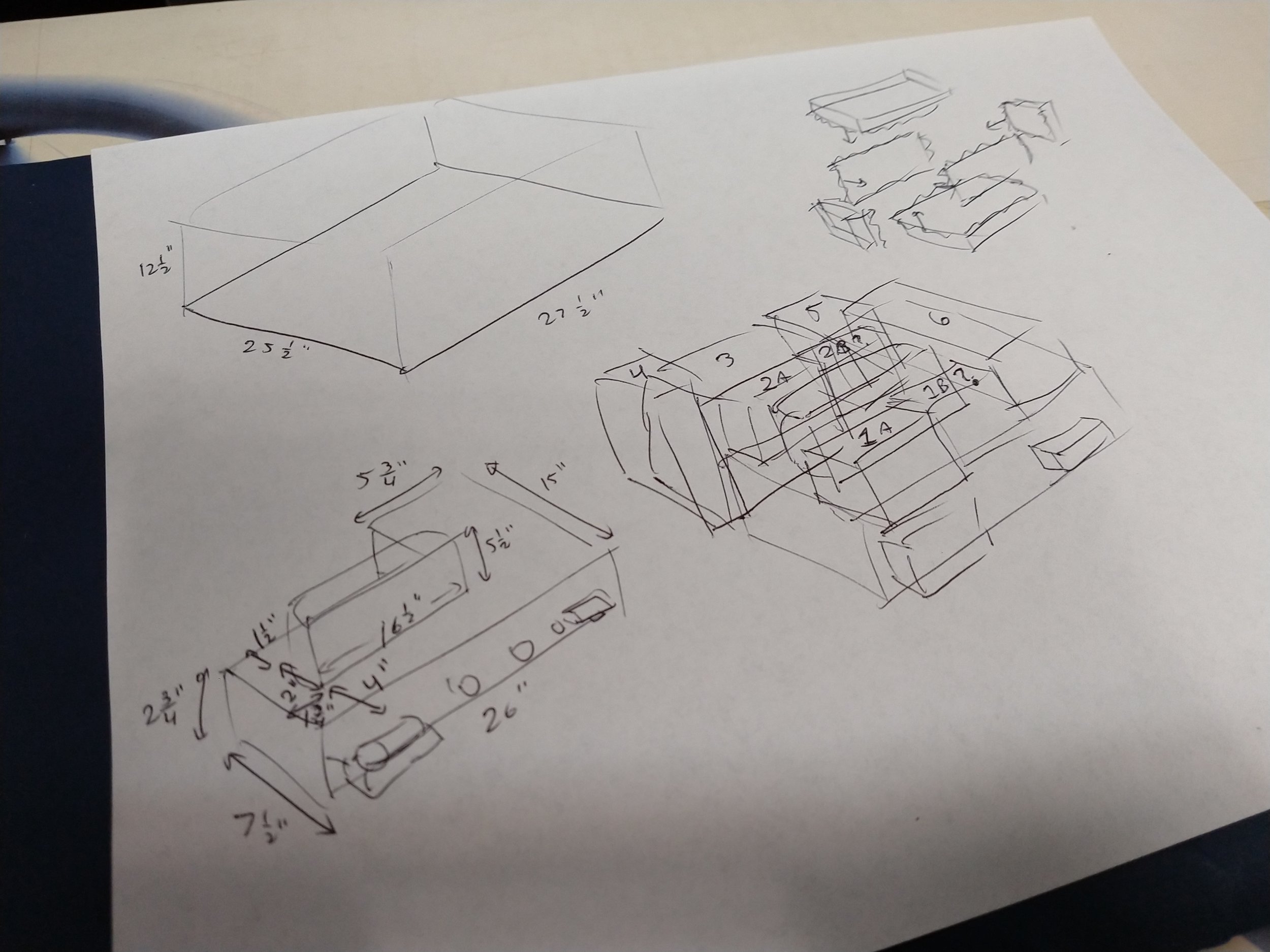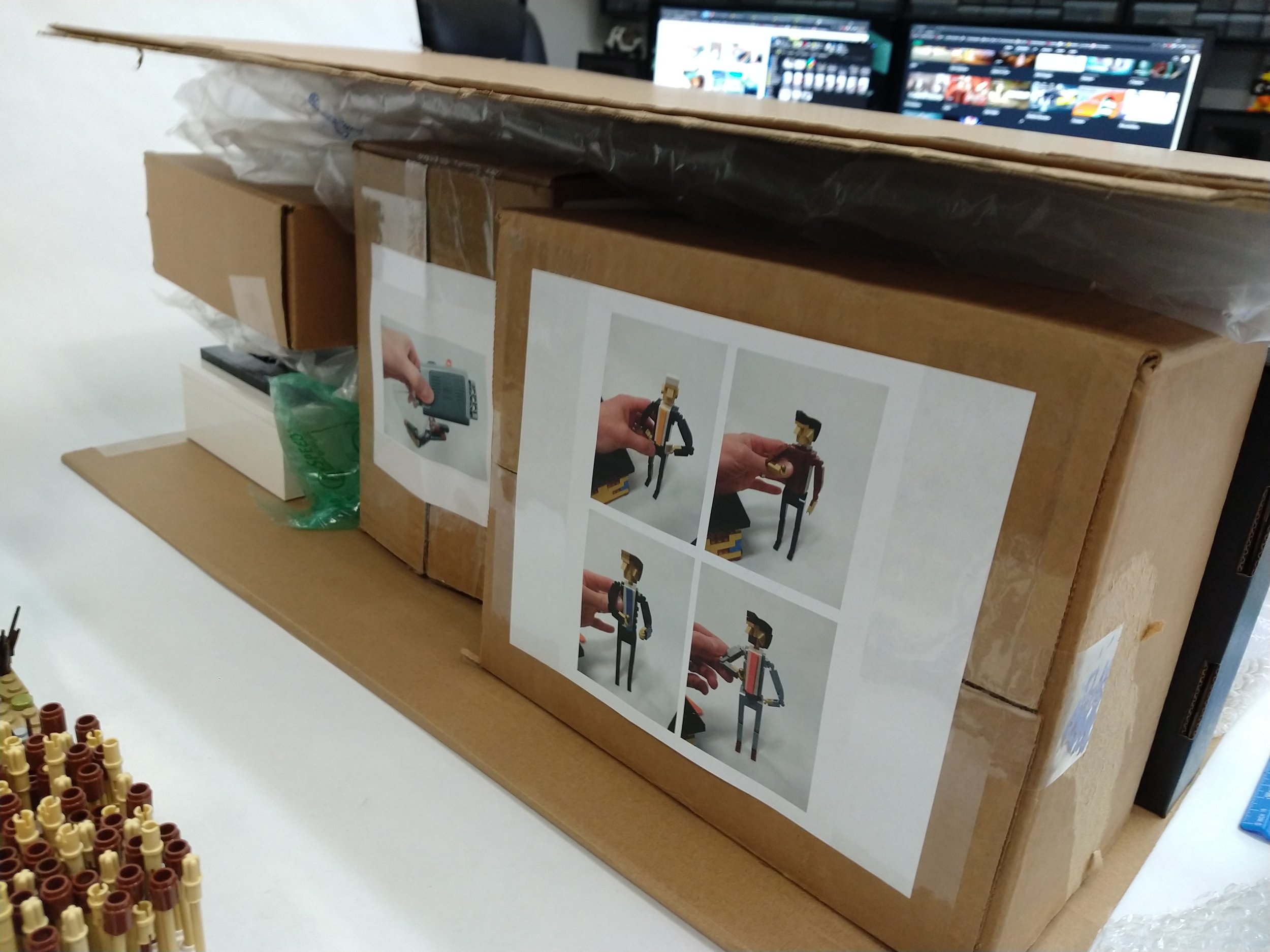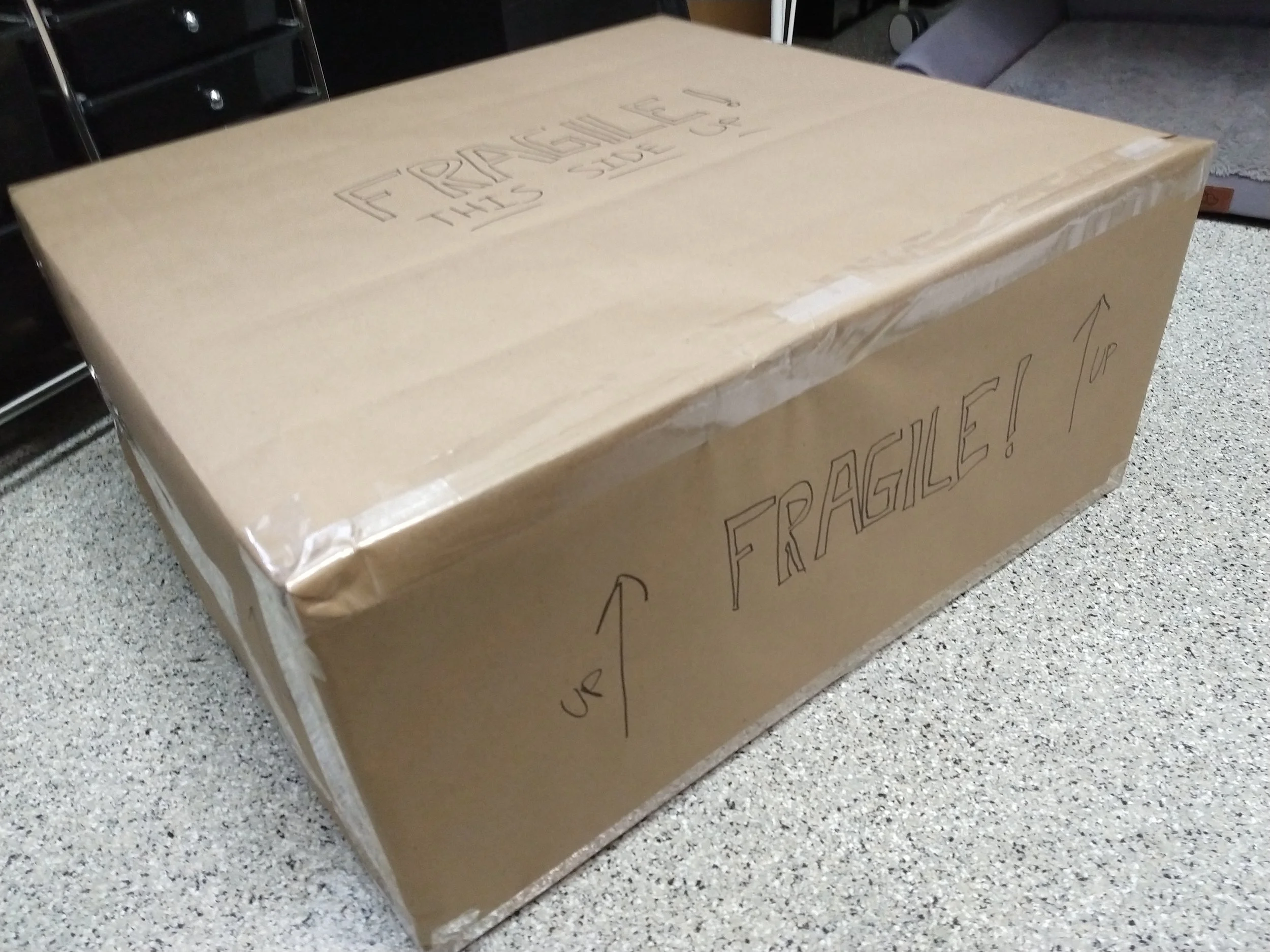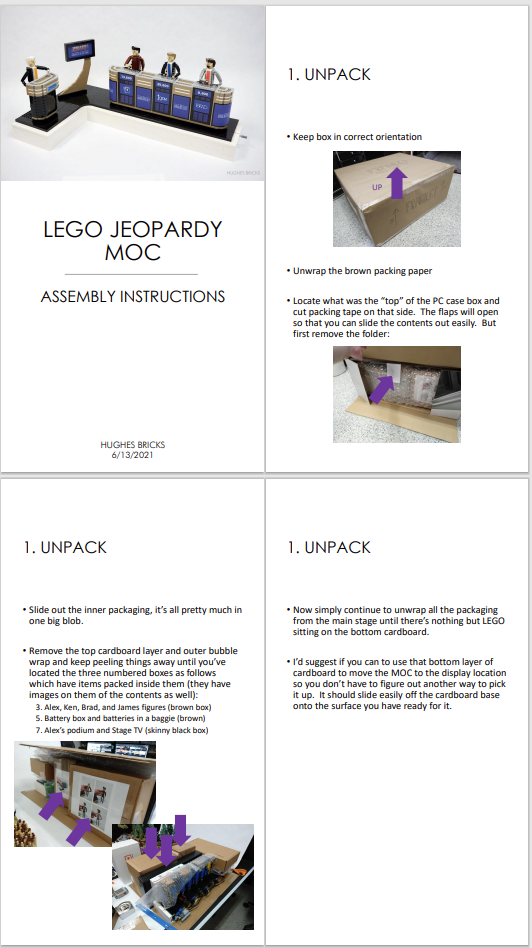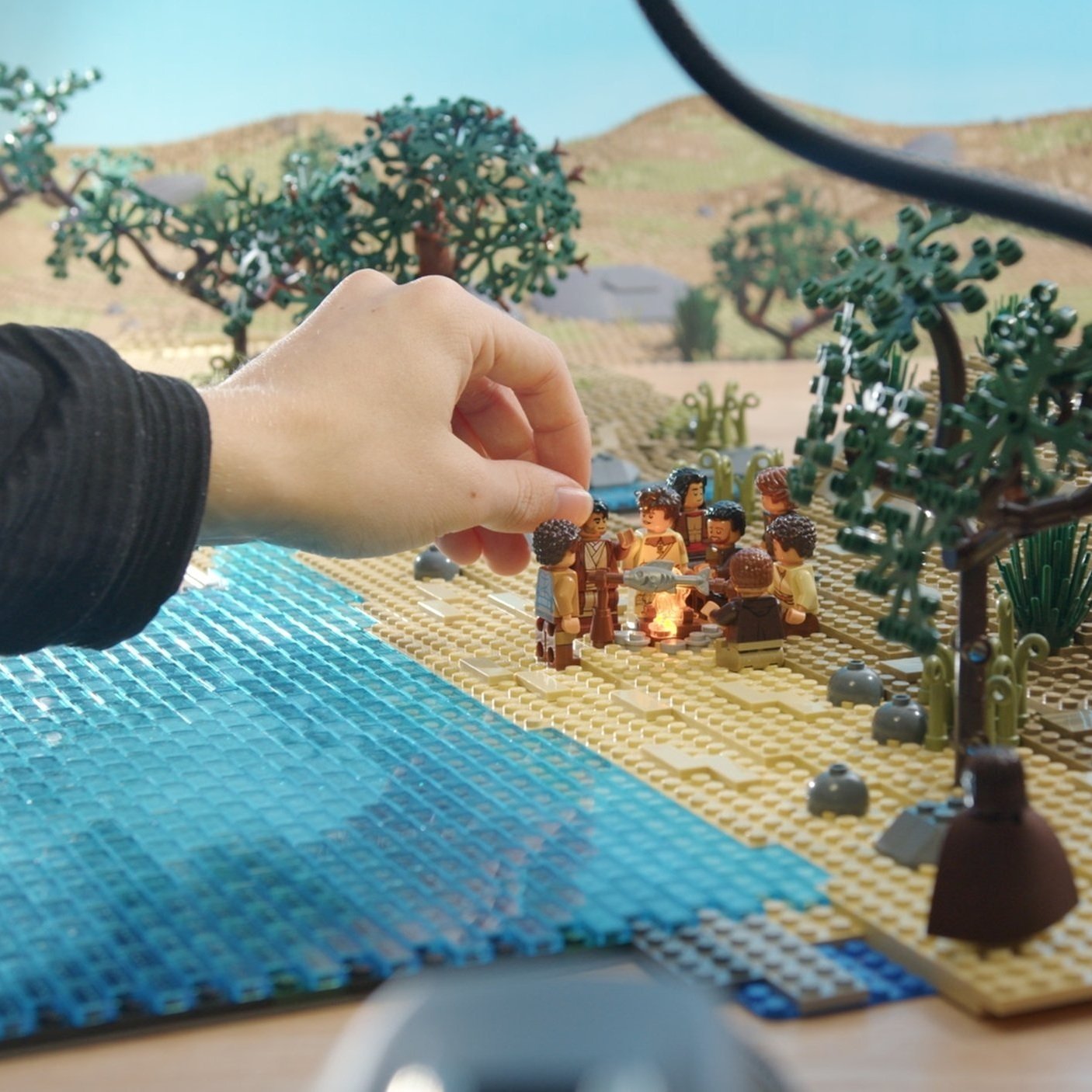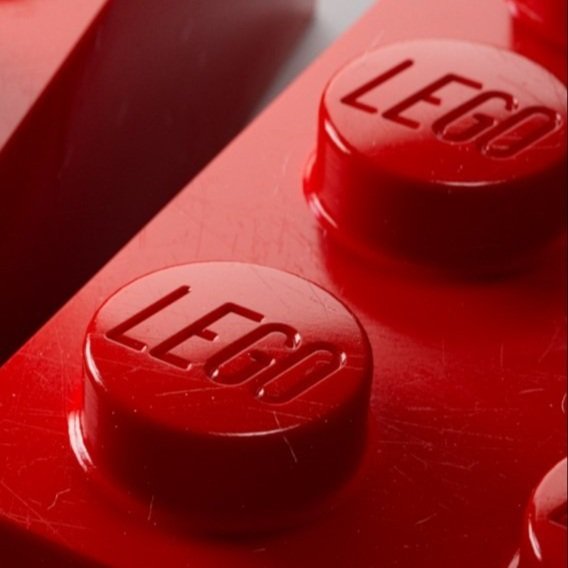Selling My First MOC: The LEGO Jeopardy Tribute to Trebek Finds a Home in Canada
/Hello there fellow LEGO nerds! I’m here to tell the tale of selling my first MOC! As I did prior to having gone through the process myself, I imagine some of you have lots of questions about all aspects of selling a MOC. Many of our readers have probably sold a MOC or two over the years, and frankly would know a lot more about this than I do. So as a one-time seller, I won’t try to claim any of this process is standard. I do think it will be a lot of fun to walk you through my own experience, and if that’s enlightening, or even mildly interesting to anyone, then that’s a darn tootin’ success!
The Jeopardy MOC!
Over a year ago now, our fearless BrickNerd-in-Chief Dave Schefcik asked me if I was interested in joining the merry band of nerds he was assembling as part of a new spin on BrickNerd. As part of that process he was hoping I might build some fun technic builds, and share them with all of you here - and at least I can say I came through with one build, the Jeopardy tribute to Alex Trebek! And you may also recall I wrote all about the design in my first article on BrickNerd. Since then I’ve done plenty of building but not much technic to speak of, so sorry about that Dave. Don’t worry, though, something’s cooking, so I’ll share that when it’s ready… [cue suspenseful wink].
The setting is May 2021, just after the online convention BrickCan 2021 where I had shown the build online. The characters are myself, my pal and amazing artist extraordinaire Paul Hetherington, and for the purposes of this story - an anonymous Canadian appreciator of the LEGO arts (and friend of Paul’s). A storm was raging in the night, and the house creaked in the howling gusting wind… Wait, hang on, it’s not that kind of story. Instead, I was sitting right here at my PC when I received an Instagram message from Paul letting me know his friend had seen my Jeopardy MOC, and was interested in purchasing the piece!
To Sell or Not to Sell
I thought about the idea for a while - and here comes the first dilemma for a MOCcer: Can I part with a MOC? Maybe even more importantly: Am I willing to part with my bricks for money? We are all used to the exact opposite, money goes out and bricks come in. So what made the decision for me? I didn’t fully decide until after speaking with the buyer, but I think I proceeded into the process because I was curious how it would all go. The idea of padding my LEGO budget for the year a little was tempting, and one final simple reason was that it felt good that someone wanted something I created as a piece of art to enjoy. So I plunged in!
Could/Should I sell my work to an interested buyer??
Now this is probably different every time, but Paul let me know up front what the buyer was offering for the build, and I knew Paul was a good filter so that the offer would be ballpark reasonable. I contacted the buyer to let them know I was okay proceeding as long as we were on the same page about the process before fully committing. I’m really glad we spoke on the phone because I could instantly tell they’d appreciate the MOC, and give it a great forever home. I knew if I kept it, almost certainly there would be a limited shelf life before breaking it down to make room for new things - so the idea that my tribute to Alex would live on, especially in Canada felt so right!
Working Out An Agreement
Next up I resolved to make a formal agreement with the buyer regarding what they would and wouldn’t get with their purchase. I could have sent the MOC literally as is, but I had it controlled by a Mindstorms brick which was huge overkill, and upon inspection there were quite a few weak spots that risked crumbling either in transport or worse - over time while running the movement features of the build. I asked Paul a lot of questions during this phase to make sure I wasn’t over or under promising anything that a normal buyer should expect. We discussed the question of maintenance for a moving MOC, which might be easy if you live down the street, but I was selling to someone hours away and in another country, so I decided to offer a one time visit if needed to resolve issues (frankly I’ll take an excuse to go to Vancouver any day!).
Another key piece of the agreement was timing - when would they get the precious MOC? I tried not to overpromise so I would have time to make modifications and digitize the model and pack it - all three things that I had never done to a MOC in this way after the fact, and still get the package to the buyer on time.
Finally we agreed that the buyer would pay the shipping costs as a fee above the base price of the MOC. This was good because I was really leery of shipping something sizeable internationally, and it did end up pricey enough that the decision proved to be a good one. I got a couple online estimates, and we wrote an initial estimate with the understanding that if it was way off we’d work it out one way or the other.
My not so fancy Microsoft Word Invoice, but hey it got the job done!
At that point, the buyer paid in full, as they felt no reason to wait for the result (possibly because Paul was there to vouch for me). I imagine other transactions of this type involve down payments if the build is a commission from scratch (to cover parts costs etc.) or simply payment in full upon receipt if the MOC already existed. I would be curious what other people experience if you feel like sharing in the chat below!
Modifications
As for the modifications, the first and most obvious one was to remove the Mindstorms brick & motor, and tack on a Power Functions motor. To ensure the build appearance wasn’t changed, and to allow access if the motor broke down, I placed the motor behind the main platform, but sticking out a bit (still not visible from the front), and on the end near where the Mindstorms interface had been so I could hook up to the original shaft relatively easily.
Go go power functions!
Next up was the dreaded Kragle. I knew that the figures and a few other items like certain gears were in potentially precarious places, and in an overabundance of caution I used some Super Glue in just those limited areas. I think Paul and others would tell you to use other materials that might be a bit more caustic to work with, but have more consistent results as I found the Super Glue mostly worked with a rock solid bond, but once or twice the connection didn’t seem to hold on the first go around.
Kragle oh my!!
Finally there were the structural modifications, which mainly consisted of adding baseplates and a beefing up a few key structural elements within the model. This made the build infinitely more stable as I had built it originally to come apart easily, and it never needed to be moved up to that point.
The great thing is that I felt confident that the mechanisms were solid and ran smoothly already, or I would have done a second pass to clean those up as well. I think having confidence that the build will function long term was key for putting my name on something and selling it.
Digitizing the Model
During the time I was making modifications and finalizing negotiations with the buyer for all the details listed above, I spent long hours making a digital copy of the model using the Bricklink Stud.io software. I don’t think I would do this for most pieces, but I did it for two reasons: the first is that this was special to me due to the subject, and I didn’t know if I might want to rebuild it some day. The second is that I wanted to know what parts were leaving my collection so I could reorder any important ones and then at least be aware of the rest.
The outside was easy… it was the innards that took some serious time to copy!
It was a painstaking process, involving opening up the model and digging around in the innards. And in this case color matters so that just added more time on top. But that was solely for my own purposes, so I felt it had nothing to do with the sale, and that I wouldn’t charge anything extra for the labor to do something that’s just for me. For all I knew, at some point I would have torn down the MOC, and made instructions at that time anyway!
Packing
Packing was an arduous process starting with finding a long enough box that wasn't a custom box (I eventually picked a computer PC box which was a little too wide but just the right length). Next I mapped out which parts would remain attached, and which would reside in internal boxes, and then planned out how to fill all the space around the MOC within the larger box!
Yeah I am pretty detail oriented…
My key rules were to ensure there was some bubble wrap around all sides to give some cushion for sharp impacts, but that the box would be relatively tightly packed and would have cardboard end plates and numerous internal boxes to help keep things mostly rigid.
Making great progress!
I also added a few special touches like labeling internal boxes with pictures to ensure he'd know where which internal boxes have items in them and which boxes were empty. I wanted the experience to be special and I personally find the little touches like that make all the difference when I’m unboxing something.
Internal box labels, my nerdiness shines!
Finally, I wrapped the whole thing in large brown packing paper for a clean exterior, and used tape to guard all corners. Was that necessary? Nope! But again I wanted this to feel less amateurish, though I have a long way to go before it’s a really “professional” job.
Anybody know if people actually treat “fragile” labeled packages nicely? Either way, it got there ok :)
Assembly Instructions
Maybe my favorite detail that I embellished on the process was the assembly instructions. I’m pretty confident the buyer could have gotten everything together just fine (especially with Paul’s help), but I figured some clear instructions with pictures would add another special touch to the experience, and also ensure there weren’t frustrations during the setup from packed to fully functioning state. I thought a happy buyer is worth a bit more effort.
It was somehow very pleasing to write up assembly instructions…
Shipping
For shipping, in the end we chose UPS and it worked quite smoothly. There were a couple pricing options, and we chose the slightly slower one because it was only going to be a day or two slower and was three times cheaper, and neither was cheap! The package was about 18 pounds and to ship from Seattle to Vancouver was ~$150 with another ~$40 customs charge which we paid online. As far as I could tell with online quoting services, other shipping companies would have been significantly more expensive.
After a few nail biting days of waiting on the shipment to arrive, I got an email from the buyer asking me to call them. They were completely happy, and had spent most of the evening unboxing, and setting up the MOC with Paul's help. We had a great chat! They sent a video, and seeing them smile when they switched the mechanism on and it ran was the reward I needed for all the hard work in preparing the model to ship! I knew the whole process of selling the MOC was absolutely worth it, and it went to a loving home!
Ordering Replacement Parts
There were some rare and relatively valuable pieces that I used in the build which I felt warranted immediate replacement, and there are others I have yet to bother to replace, and may never do so actively.
The only parts really worth mentioning here specifically are the power functions parts. The motor, the battery box, the three switches, and the lights were all parts that I know will have more and more limited availability now that they’re out of production, so I made sure to replace them ASAP.
Three switches, six light strings, a large motor, and a battery box… not so cheap after production was discontinued!
So that’s my tale! It was quite an exciting, then nerve wracking experience as I realized what I had promised to another person for money. Happily it worked out splendidly for both parties, and I learned a lot. I also really enjoyed pretending I was sending some sort of premium product, and arts and crafts-ing my way to some specialized touches to make the experience feel a bit more unique and fun for the buyer. Let me know if you’ve had similar or different experiences in the chat!
What experience do you have with selling or buying a MOC? Do you think Doug over-did it with the tape? Share your thoughts in the comment section below.
Do you want to help BrickNerd continue publishing articles like this one? Become a top patron like Charlie Stephens, Marc & Liz Puleo, Paige Mueller, Rob Klingberg from Brickstuff, John & Joshua Hanlon from Beyond the Brick, Megan Lum, and Andy Price to show your support, get early access, exclusive swag and more.

